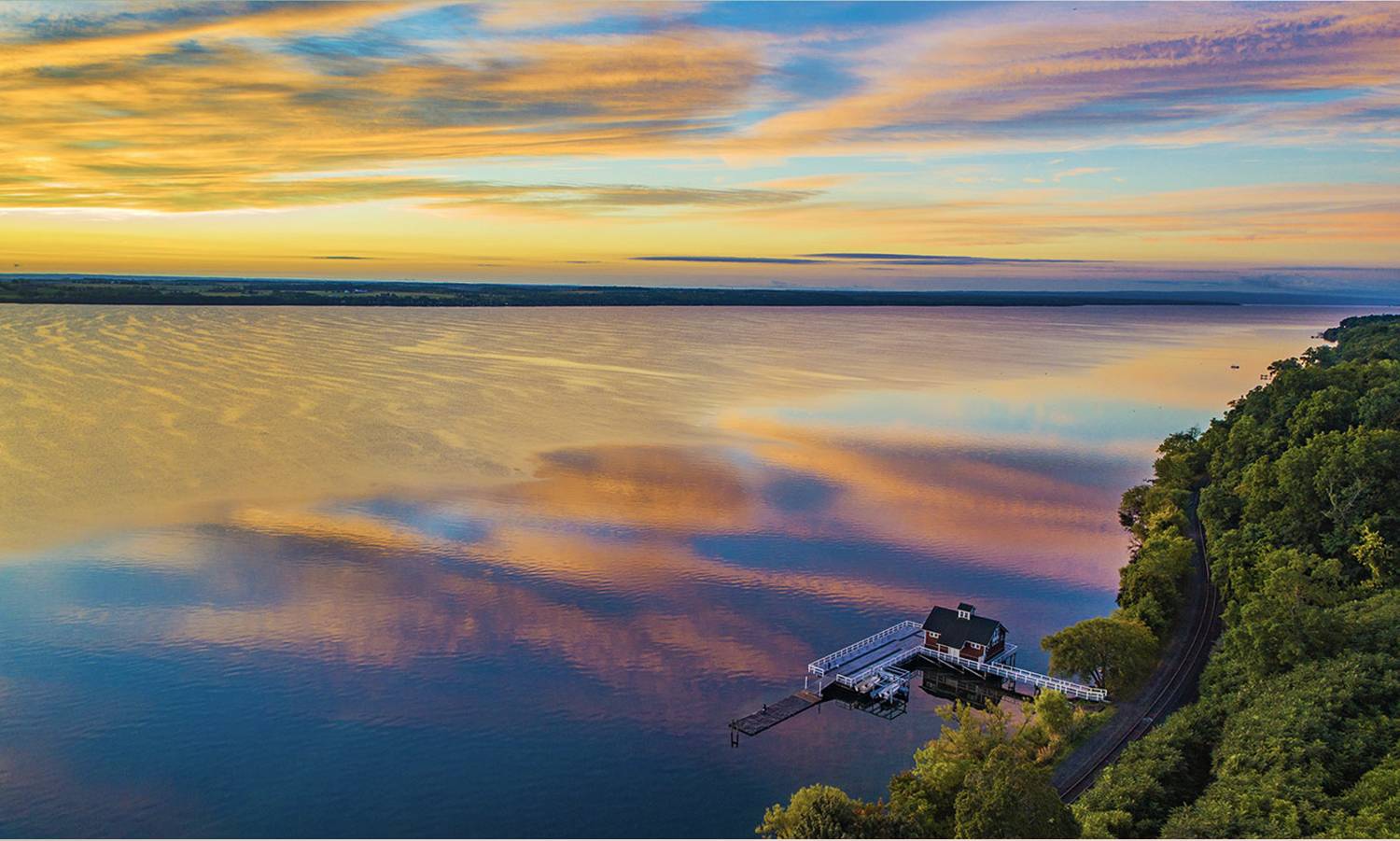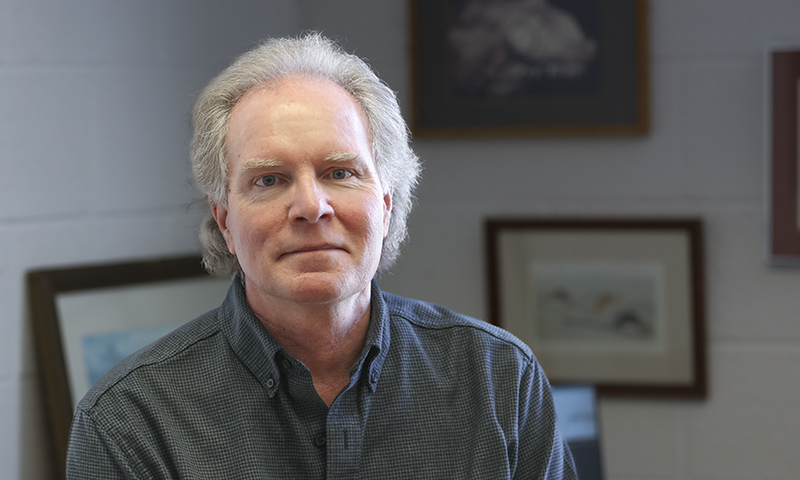
James Ryan

James M RyanProfessor Emeritus of Biology
Joined faculty in 1987
Ph.D., Massachusetts at Amherst
M.S., Michigan
B.A., SUNY, Oswego
Contact Information
Scholarly Interest
My research focuses on mammalian biodiversity and conservation of African small mammals. I worked for several years in the rain forest of Madagascar surveying small mammal communities and primates. I served as Team Leader on the Ghana Coastal
Wetlands Management Project which established a series of long-term biodiversity monitoring sites in Ghana, West Africa (this project was funded by the
World Bank’s Global Environment Facility).
In 2001 I studied the rare hero shrew in the Bwindi Impenetrable Forest of Southern Uganda on a National Geographic Grant.
I am involved in a long-term study of the stream ecosystems surrounding Seneca Lake in an effort to develop a model of the Seneca Lake Ecosystem.
Courses Taught
Organisms and populations
Vertebrate anatomy
Field biology
Math models of biological systems
Water
Publications
Vaughan, T.A., Ryan, J.M., and Czaplewski, N.J. Mammalogy, 5th edition, Jones & Bartlett Publishers, Boston, Mass. In prep.
Ryan, J. Adirondack Wildlife, A Field Guide. University Press of New England, Hanover, NH. In press.
Attuquayefio, D.K. and Ryan, J.M. (2006) Taxonomic report on small mammals from two coastal wetland (Ramsar) sites in Ghana. West African Journal of Applied Ecology.
Attuquayefio, D.K., Raxworthy, C.J., and Ryan, J.M. (2005) Preliminary biodiversity assessment (Herpetofauna and mammals) of a coastal wetland in the Volta Region, Ghana. Ghana Journal of Science. 45:19-26.
Mammalogy, Saunders College Publishing 1999.
Ryan, J. M. (in press) Nesomys Spp. (chapter in Madagascar, A Natural History, Chicago University Press).
Mitchell, K. and Ryan, J. M. (in press) Game theory models of animal behavior. Journal of Undergraduate Mathematics and its Applications.
Ryan, J. M. (editor) (2000) Biodiversity and Ecology of Coastal Wetlands in Ghana. Biodiversity and Conservation, Special Issue, 9(4):445-560.
Ryan, J. M. and Y. Ntiamoa-Baidu. (2000) Biodiversity and ecology of coastal wetlands in Ghana. Biodiversity and Conservation, 9:445-446.
Gordon, C., Ntiamoa-Baidu, Y., and J. M. Ryan. (2000) The Muni-Pomadze Ramsar site. Biodiversity and Conservation, 9:447-464.
J. M. Ryan and D. Attuquayefio. (2000) Mammal fauna of the Muni-Pomadze Ramsar site, Ghana. Biodiversity and Conservation, 9:541-560.
Vaughan, T.A., J. M. Ryan, and N. J. Czaplewski. 1999. Mammalogy, 4th edition, Saunders College Publishers, Philadelphia. Pp.
Hermanson, J.W., Ryan, J. M., Cobb, M.A., Bentley, J., and W.A. Schutt. 1998. Histochemical and electrophoretic analysis of the primary flight muscle of several phylostomid bats. Can. J. Zool., 76:1983-1992.
Kolmes, S., K. Mitchell, and J. Ryan. 1998. Optimal foraging theory. Pp. 97-140 In UMAP Modules 1997: Tools for Teaching, (P. Campbell, ed.) Consortium for
Mathematics and its Applications, Inc. Lexington, MA.
Sokoloff, A.J., Ryan, J.M., Valerie, E., Wilson, D.S., and G.E. Goslow, Jr. 1998 Neuromuscular organization of avian flight muscle: Morphology and contractile
properties of motor units in the pectoralis (pars thoracicus) of pigeon (Columba livia). J. Morph., 236:179-208.
Mitchell, K. and J. Ryan. 1998 The species-area relation. UMAP Journal (Journal of Undergraduate Mathematics and its Applications. 19:141-170.
Ryan, J.M., Cushman, J., Jordon, B., Samuels, A., Frazer, H., and C. Baier. 1998 Topographic position of forelimb motoneuron pools is conserved in vertebrate evolution,
Brain, Behav., Evol., 51:90-99.
Ryan, J.M., J. Cushman, and C. Baier. 1997. Organization of forelimb motoneuron pools in two bat species (Eptesicus fuscus and Myotis lucifugus). Acta Anatomica,
158:121-129.
Kolmes, S., K. Mitchell, and J. Ryan. 1997. Optimal foraging theory. UMAP Journal, (Journal of Undergraduate Mathematics and its Applications. 18(1):43-85.
Ryan, J.M., Cushman, J., Frazer, H. and A. Samuels. 1996. Motoneuron Tracing
Techniques, pp. 13-26 in D. Blackburn (ed.) Neuroscience Methods: The Undergraduate Laboratory Experience, Trinity College Press.
PROFESSIONAL AFFILIATIONS
Seneca Lake Pure Waters Association (Board member)
North American Benthological Society
Sigma Xi Scientific
Research Society
American Society of Mammalogists
Guild of Natural Science Illustrators
Society for Conservation Biology
Species Survival Commission Insectivore Specialist Group of IUCN -
The World Conservation Union
PERSONAL STATEMENT
I have many research interests including a long standing interest in the mammalian biology and conservation of African small mammals. I''ve worked in a variety of locations in Africa the Carribean, and South America. In Africa, my research focuses on mammalian biodiversity and conservation of African small mammals.
I worked for several years in the rain forest of Madagascar surveying small mammal communities and primates. I recently serves as Team Leader on the Ghana Coastal Wetlands Management Project which established a series of long-term biodiversity monitoring sites in Ghana, West Africa.
I co-leaded an expedition to Uganda''s Bwindi Impenetrable National Park in summer 2001 to study and film the hero shrew with Dr. Dennis Cullinane from Boston University. My interest in mammals led to the publication in 2000 of a textbook on mammals with Drs. T. Vaughan (Northern Arizona University) and N. Czaplewski (University of Oklahoma).
In addition, I maintain my interests in the evolution of the neuromuscular system in vertebrates. I am particularly interested in the relationship between muscle biochemical properties and motor unit function.
Recently I have begun work on a long-term project to study the ecology of aquatic invertebrates in the freshwater streams of the Finger Lakes. My students and I hope to use aquatic organisms as bioindicators of ecosystem health. Ultimately we would like to build a mathematical model of the Seneca Lake Ecosystem that could be used to predict future changes to the ecosystem.
Finally, I am at work on a Field Guide to the Natural History of the Adirondacks.
